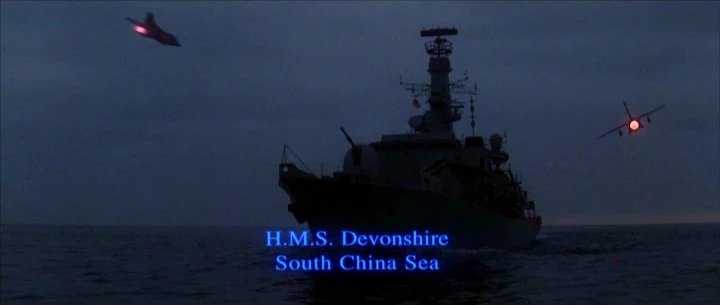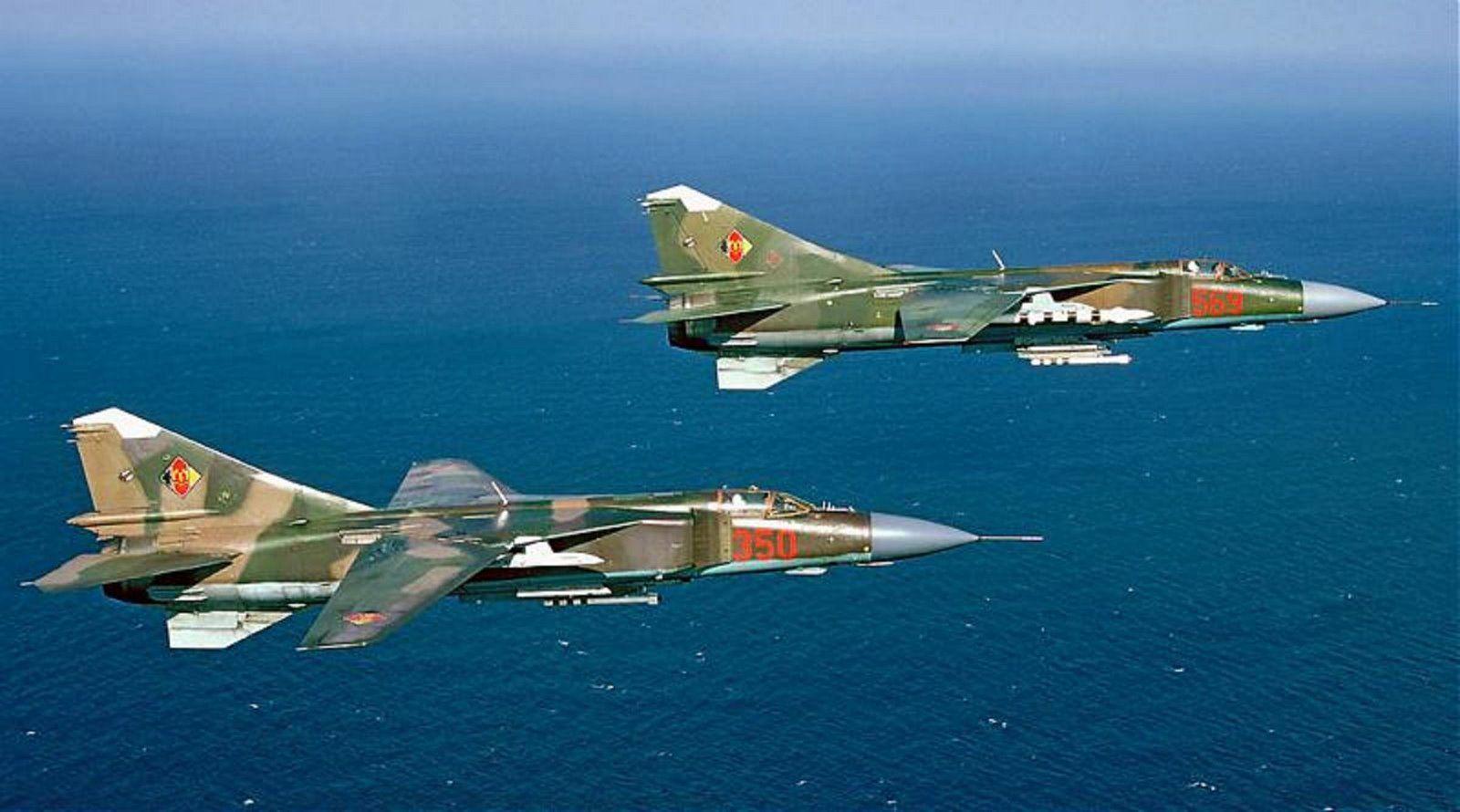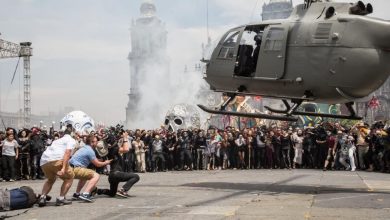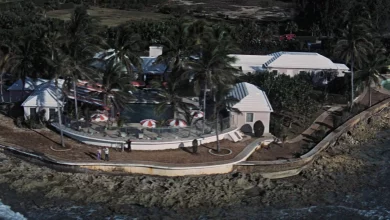Unveiling the MIG Fighter Jets In James Bond Movies.

Unveiling the MIG Fighter Jets: A Fusion of Power and Performance
In the realm of aviation, few names command as much respect and curiosity as MIG fighter jets. These iconic aircraft have etched their mark in both the annals of real warfare and the silver screen, capturing the hearts of aviation enthusiasts and moviegoers alike. In this comprehensive exploration, we delve into the intricacies of MIG fighter jets, from their historical significance to their awe-inspiring capabilities. Additionally, we’ll dive into their memorable appearances in the James Bond movie franchise, highlighting their role in shaping the on-screen world of action and intrigue.
Key Takeaways
- Speed and Agility: MIG fighter jets are renowned for their exceptional speed and agility, making them formidable adversaries in aerial combat and tactical maneuvering.
- Versatility in Roles: MIGs’ adaptability allows them to fulfill a range of roles, from air superiority to ground attacks, showcasing their versatility on the battlefield.
- Cinematic Impact: MIGs have left an indelible mark in cinema, with their appearances in James Bond movies adding to their mystique and reputation.
- Vulnerabilities and Improvements: While MIGs possess strengths, their vulnerabilities include limited stealth capabilities and aging technology, driving the need for ongoing improvements.
- Airshow Realities: Airshow crashes highlight the challenges of showcasing high-performance aircraft, underscoring the importance of safety protocols and continuous learning.
MIG Fighter Jets: A Detailed Look
In the realm of aviation and cinema, MIG fighter jets have soared to prominence, capturing the imagination of audiences worldwide. Among the iconic moments featuring MIGs, their role in “Tomorrow Never Dies” and other James Bond movies stands out. This article delves into the intricate details of MIG fighter jets and their cinematic presence, exploring their history, design, capabilities, and their exciting appearances in the James Bond franchise.
MIG Fighter Jets: History and Design
MIG, short for Mikoyan and Gurevich Design Bureau, has a rich history dating back to the early days of the Cold War. The bureau was renowned for producing cutting-edge fighter aircraft, and their creations, including the MIG-21, MIG-29, and others, have become synonymous with military prowess. These jets are characterized by their sleek aerodynamic designs, advanced avionics, and potent weaponry.
MIG-21: The Timeless Icon
The MIG-21, known as the “Fishbed,” first took flight in the 1950s and played a pivotal role during the Cold War era. Its distinctive delta wing design and impressive speed made it a formidable adversary in aerial combat. With a top speed exceeding Mach 2, the MIG-21 showcased the technological prowess of its time.
MIG-29: The Versatile Marvel
Introduced in the 1970s, the MIG-29, nicknamed the “Fulcrum,” represented a leap forward in fighter jet technology. Its twin-engine layout, advanced radar systems, and ability to carry an array of missiles made it a versatile and lethal aircraft. The MIG-29’s maneuverability and adaptability contributed to its widespread use by various air forces around the world.
MIG Fighter Jets in “Tomorrow Never Dies”
The allure of MIG fighter jets extended to the silver screen, captivating audiences in the James Bond film “Tomorrow Never Dies.” In this 1997 action-packed thriller, These are referred to as Chinese MiGs. Carver’s stealth ship sinks the British warship and shoots down one of the planes, triggering an international incident. These look like CGI. In real life the only MiGs the People’s Liberation Army Air Force ever used were the MiG-9, MiG-15, a copy of the MiG-17, MiG-17 and MiG-21 (Chengu J-7, still in use today). and intrigue.


MIG Fighter Jets in James Bond Movies
Beyond “Tomorrow Never Dies,” MIG fighter jets have made sporadic appearances throughout the James Bond film series, contributing to the franchise’s high-octane espionage narratives.

“Octopussy” (1983)
In “Octopussy,” a MIG-25 is showcased in a daring escape sequence. The film’s iconic scene involves Bond’s dramatic evasion as he hijacks the MIG-25 and navigates a harrowing flight through treacherous terrain.
“GoldenEye” (1995)
Continuing the tradition, “GoldenEye” features a MIG-29 as a key component of the film’s climax. The MIG-29’s inclusion amplifies the film’s suspenseful atmosphere as Bond confronts formidable aerial adversaries.

The Power and Weaknesses of MIG Fighter Jets in Real Warfare and Airshows
MIG fighter jets have earned their place in aviation history due to their remarkable capabilities and contributions in real warfare. However, like any sophisticated technology, they also come with certain vulnerabilities and challenges, often highlighted in airshows and demonstrations.
Powerful Aspects in Real Warfare
Speed and Maneuverability
MIG fighter jets are renowned for their exceptional speed and agility, which play crucial roles in combat situations. Their ability to achieve high speeds and execute intricate maneuvers allows them to engage opponents effectively, evade enemy fire, and gain advantageous positions.
Weaponry and Payload
MIGs are equipped with advanced weapon systems, ranging from air-to-air missiles to air-to-ground munitions. This diverse armament enables them to engage various targets, making them versatile assets on the battlefield. The substantial payload capacity of MIGs allows for a mix of weapons, enhancing their effectiveness in different mission profiles.
Adaptable Designs
MIG fighter jets have a history of adaptability, with various models designed for specific roles. Whether it’s air superiority, ground attack, or reconnaissance, MIGs can be tailored to suit the mission’s requirements, showcasing their versatility and effectiveness in a range of scenarios.
Weaknesses and Challenges in Real Warfare
Limited Stealth Capabilities
One of the challenges MIG fighter jets face is their limited stealth capabilities compared to some modern counterparts. Their radar cross-section can make them more susceptible to detection by advanced radar systems, potentially putting them at a disadvantage against stealthier opponents.
Aging Technology
While MIGs have evolved over the decades, some models still rely on older technology, which might not match the advancements seen in newer aircraft. This can impact their ability to counter emerging threats and maintain an edge in modern warfare.
Maintenance and Reliability
Like all complex machines, MIG fighter jets require regular maintenance and support to function optimally. In combat environments with limited resources, ensuring consistent maintenance can be a challenge, potentially affecting the reliability of these aircraft during critical missions.
Crashes in Airshows and Demonstrations
MIG fighter jets, despite their impressive capabilities, have encountered accidents during airshows and demonstrations. These incidents often shed light on the risks associated with high-performance aircraft and the challenges of showcasing their potential.
Human and Mechanical Factors
Crashes during airshows can be caused by a combination of human error and mechanical failures. Pilots pushing the aircraft to its limits in front of a crowd can sometimes lead to loss of control, especially in demanding maneuvers. Additionally, technical malfunctions can contribute to accidents.
Safety Precautions and Improvements
Following crashes, aviation authorities and manufacturers typically analyze the causes to enhance safety measures. Lessons learned from accidents contribute to the ongoing improvement of aircraft design, pilot training, and airshow protocols.

Unveiling the MIG-35: The Apex of Modern Combat Aviation
The MIG-35, often referred to as the MiG-29M in some circles, is a marvel of modern engineering that brings forth an impressive array of technical specifications. With a wingspan of approximately 12 meters and a length of around 19 meters, the aircraft maintains a sleek and aerodynamic profile that enhances its agility and performance. Its maximum takeoff weight reaches up to 24,500 kilograms, including a substantial fuel capacity that grants it extended operational ranges.
Underneath its distinctive airframe lies a suite of advanced avionics systems that include the latest Zhuk-ME radar, which offers enhanced target detection and tracking capabilities, as well as an increased range compared to its predecessors. This radar’s versatility allows the MIG-35 to engage multiple targets simultaneously, an invaluable asset in dynamic combat scenarios.
Powered by twin RD-33MK engines, the MIG-35 achieves a top speed of Mach 2.25, enabling rapid response times and swift engagement capabilities. Additionally, its thrust-vectoring nozzles grant the aircraft exceptional maneuverability, facilitating complex aerial maneuvers even at lower speeds.
The MIG-35’s armament options further highlight its combat effectiveness. With nine hardpoints for external stores, the aircraft can carry an assortment of weaponry, including air-to-air missiles like the R-77 and R-73, as well as precision-guided munitions such as laser-guided bombs and anti-ship missiles. The integration of an internal 30mm GSh-30-1 cannon provides a potent close-combat capability.
Furthermore, the MIG-35’s advanced electronic warfare suite, which includes jamming systems and chaff/flare dispensers, enhances its survivability against enemy threats. Its cockpit is equipped with state-of-the-art displays and controls, offering intuitive and comprehensive situational awareness to the pilot.
In essence, the MIG-35’s technical prowess is a testament to the continuous evolution of aviation technology. Its blend of agility, advanced avionics, versatile weaponry, and electronic warfare capabilities cements its position as a cutting-edge multirole fighter jet that upholds the legacy of the MIG brand while pushing the boundaries of what is achievable in modern aerial warfare.
SHOP FOR MIG Fighter Jet
FAQ :
1. What Makes MIG Fighter Jets Stand Out in Warfare?
MIG fighter jets distinguish themselves in warfare through their exceptional speed and agility, which allow them to maneuver swiftly in the sky and engage adversaries effectively. These aircraft are equipped with a diverse range of advanced weaponry, enabling them to undertake various missions, from air-to-air combat to ground attacks. Their adaptability, along with a storied history of combat effectiveness, solidifies their significance on the battlefield.
2. Are MIG Fighter Jets Vulnerable to Detection?
MIGs, while formidable, can be vulnerable to detection due to their limited stealth capabilities compared to more modern aircraft. Their radar cross-section might make them easier to spot on enemy radar systems, potentially impacting their ability to operate covertly in certain scenarios. This emphasizes the importance of well-planned tactics and awareness during engagements.
3. How Do MIG Fighter Jets Adapt to Different Roles?
MIG fighter jets boast adaptability through various models designed for specific roles. Whether it’s air superiority, ground attack, or reconnaissance, MIGs can be customized to fulfill distinct mission requirements. This adaptability is a testament to the engineering ingenuity of these aircraft, as they can seamlessly transition between roles, enhancing their tactical flexibility on the battlefield.
4. What Challenges Do MIGs Face Due to Aging Technology?
While MIGs have a rich history, some models still rely on aging technology. This can present challenges in keeping up with modern advancements seen in newer aircraft. The limitations of older avionics and systems might impact their ability to effectively counter emerging threats, requiring innovative solutions to bridge the technology gap.
5. How Do Crashes During Airshows Affect MIG Fighter Jets’ Reputation?
Crashes during airshows can impact the reputation of MIG fighter jets, highlighting the risks associated with high-performance aircraft. While these incidents are unfortunate, they also serve as opportunities to emphasize the complexity of aviation and the need for ongoing safety improvements. Lessons learned from accidents contribute to enhancing the overall safety of MIGs and other aircraft.
6. How Are Human Factors Involved in Airshow Crashes?
Human factors play a significant role in airshow crashes. Pilots, aiming to impress the crowd, may push the aircraft to its limits, potentially leading to loss of control. The pressure to perform flawlessly can sometimes override safety considerations. Understanding and addressing these psychological factors are vital in preventing such accidents.
7. What Are the Safety Precautions Following Airshow Crashes?
After airshow crashes, thorough investigations are conducted to determine the causes and contributing factors. Aviation authorities, as well as manufacturers, analyze these incidents to improve safety protocols and enhance aircraft designs. These precautions help prevent similar accidents in the future and ensure that the lessons learned are integrated into aviation practices.
8. Can MIG Fighter Jets Withstand the Demands of Modern Warfare?
MIG fighter jets, while possessing impressive capabilities, may face challenges in meeting the demands of modern warfare. As warfare evolves, the emergence of advanced technologies like stealth and electronic warfare systems necessitates continuous upgrades to keep pace with the changing landscape. Adapting MIGs to these new challenges requires a balance between innovation and the inherent strengths of the aircraft.
9. How Do MIG Fighter Jets Compare to Their Modern Counterparts?
MIG fighter jets have a unique place in aviation history, but when compared to their modern counterparts, they might lag behind in terms of certain technological advancements. While MIGs excel in areas like speed and agility, newer aircraft might have superior stealth capabilities and advanced avionics. The comparison underscores the importance of selecting the right tools for specific mission requirements.
10. What Lies Ahead for MIG Fighter Jets in Aviation?
The future of MIG fighter jets is characterized by a quest for balance between tradition and innovation. Continued upgrades and adaptations will be essential to ensure that these aircraft remain relevant and effective on the battlefield. Their enduring legacy in both real warfare and cinema, coupled with ongoing advancements, promises an intriguing trajectory for MIGs in the world of aviation.
Conclusion: The Legacy Continues
MIG fighter jets stand as a testament to the boundless creativity and innovation of human engineering. From their inception during the Cold War to their modern iterations, MIGs have showcased not only the evolution of aviation technology but also the dedication of those who design, fly, and maintain them. While challenges exist, their enduring impact in both real warfare and cinematic storytelling is a testament to their iconic status.
As these jets navigate the skies, they carry with them the echoes of battles fought, missions accomplished, and dreams achieved. Their legacy persists, not only on the battlegrounds and in the theaters but in the collective imagination of those who continue to be captivated by the power and grace of MIG fighter jets.















